Traveling through the NRA show floor, I ran upon a small company from east coast called Seecamp Firearms. They didn’t have a large booth presence, but the staff was very inviting and willing to tell me all about their display of small firearms on display. I was absolutely intrigued and honestly couldn’t wait to get my hands on one for a full test. The “mouse gun” category has long been one of my favorite areas of the concealed carry market, just because I personally enjoy having the protection of a handgun, without the bulky weight of a large object on my body.
Although many have never heard of them, The Seecamp Firearms company has been a respected name in the firearms industry for several decades. Known for their high-quality craftsmanship and attention to detail, Seecamp Firearms produces one of the finest quality conceal carry micro-pistols on the market today.
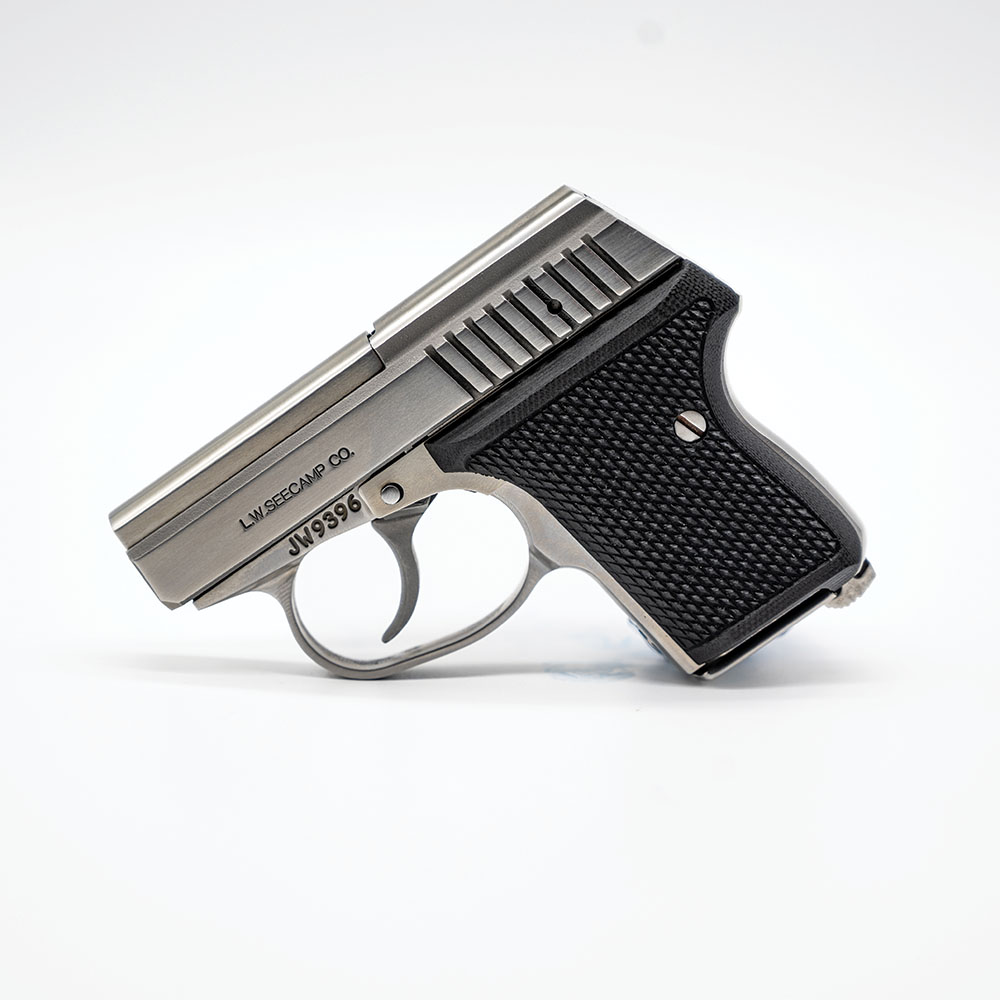
Let’s delve into the Seecamp Firearms .32 ACP handgun, exploring its features, performance, and the history of the company behind it.
A Rich History of Seecamp Firearms:
During my research on the company’s history, I was genuinely surprised to discover the significant role this modest company played in both the local community of 1911 enthusiasts and the wider firearms development community across the country.
The company’s namesake, Ludwig (Louis) Wilhelm Seecamp (1901-1989), was a highly skilled master gunsmith. He migrated with his family to the United States in 1959, making their way through Canada. From 1959 until his retirement in 1971, Seecamp served as the gun designer for O.F. Mossberg.
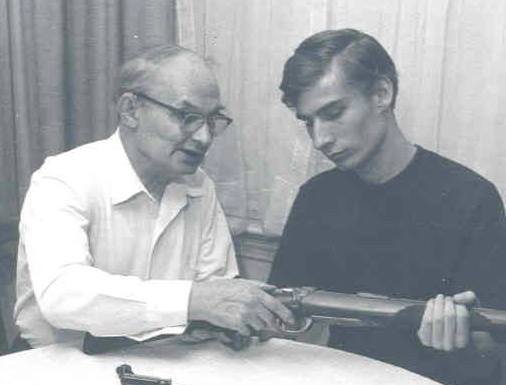
In 1973, L.W. Seecamp Co. was established as a family business, specializing in Ludwig’s patented (#3722358) double-action conversion for the renowned Colt .45 semi-automatic pistol, known as the 1911. This conversion occurred during a period when the debate between single-action and double-action was at its peak. The company’s achievement resulted in the world’s first commercially available double-action .45 autoloaders. From the early 1970s to the early 1980s, approximately 2000 such double-action conversions were performed. Ludwig, being a fan of the 1911 and a proponent of double-action carry, naturally saw commercial conversions as an extension of his own personal protection firearm, which he had converted to double-action.
By the late 1970s, several double-action .45 pistols, including the impressive Browning BDA (later SIG), had emerged in the market. In 1981, the LWS .25 was introduced to address a neglected niche. The passage of the Gun Control Act of 1968 had made it difficult to find small-quality pistols. Furthermore, the concept of double-action-only pistols, which had been dormant for over a quarter century, was ready for a comeback. All double-action-only pistols, technically referred to as trigger cocking only pistols, can be traced back to either the Czech CZ36/CZ45 design with hammers or the French LeFrancais design with striker firing. The LWS lineage can be traced back to the Czech line, while pistols like Glocks and Kel-tecs trace their ancestry to the French line. It’s important to credit the origins where they are due.
In 1979, Seecamp Co. introduced the telescoping recoil system as part of their gunsmithing package. This system, covered by patent #4201113 granted to Ludwig’s son and co-founder of Seecamp Company, Lueder (Larry) Seecamp, has become the primary spring system used in modern short-slide short-recoil autoloaders. In an article titled “The Rolls Royce of Bobcat .45’s” published in the September/October 1979 issue of American Handgunner, Mason Williams described this development as a groundbreaking advancement in the miniaturization of automatic pistols, potentially the most significant development in the field in a hundred years. While the patent was in effect, the system was adopted by Glock, Colt, Kahr, Cylinder and Slide, Para-Ordnance, and Lasermax (for use in mini-Glock laser units). After the patent expired in 1998, other manufacturers such as Kimber, Taurus, IM Metal, and Springfield Armory quickly embraced the system for their short-slide autos.
The introduction of the LWS .25 played a vital role in reviving the production of double-action-only and small pistols. It was the first stainless steel double-action-only pistol and also the first hammer-fired, double-action-only semi-automatic pistol manufactured in the USA. This design was protected by U.S. patents 4,428,138 and D269,896 issued to Ludwig (Louis) Seecamp.
Around 1985 the LWS .25 was discontinued and the LWS .32 was introduced. The larger caliber pistol remained exactly the same size, which at the time was considered an amazing feat. The caliber .32 had at the time of the introduction of the LWS .32 been relegated to the dustbin of firearms history. Today .32 caliber is thriving in very great part because of the LWS .32 and its clones – and the demonstration that such a market existed.
Additionally, in 2003 Seecamp launched their .380 version, and both of these models are still very popular today. For our testing purposes, we will be focusing on the 32ACP version.
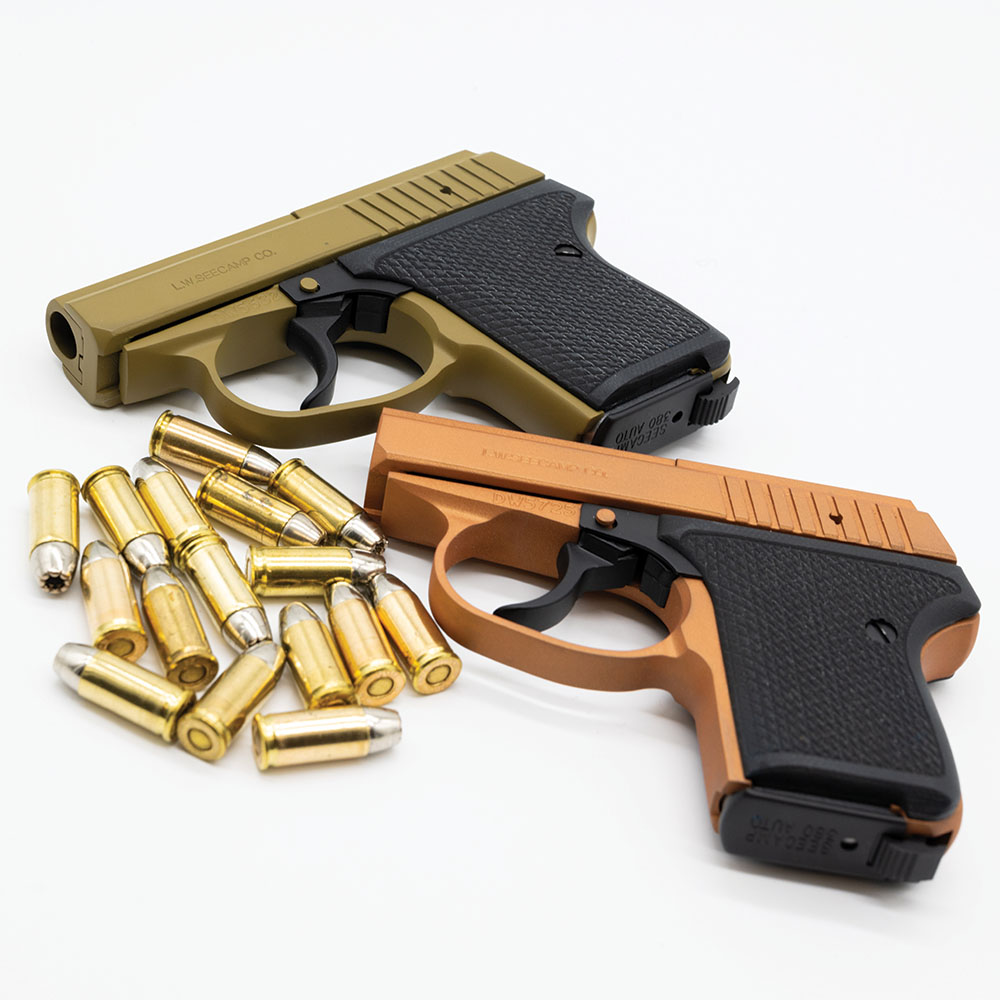
The Seecamp .32 ACP handgun, also known as the Seecamp LWS 32, is one of the company’s most popular offerings. Chambered in .32 ACP (Automatic Colt Pistol), it strikes a balance between manageable recoil and effective self-defense capabilities. Let’s explore some of its notable features:
- Compact and Lightweight Design: The Seecamp .32 ACP is a true pocket pistol, designed for concealed carry. It boasts a slim profile and weighs in at just 11.5 ounces, making it easily concealable without compromising on durability.
- Stainless Steel Construction: The handgun’s frame and slide are crafted from high-quality stainless steel, ensuring corrosion resistance and longevity. The use of stainless steel also enhances the firearm’s overall strength and reliability.
- Double-Action Only (DAO): The Seecamp .32 ACP features a double-action-only trigger mechanism, providing a consistent trigger pull each time. This design promotes simplicity and reduces the chance of accidental discharge.
- No Sights – The Seecamp does not have sights for a reason. The gun is made for close quarter encounters, and they did not want anything on the firearm that might snag on your pocket or pants.
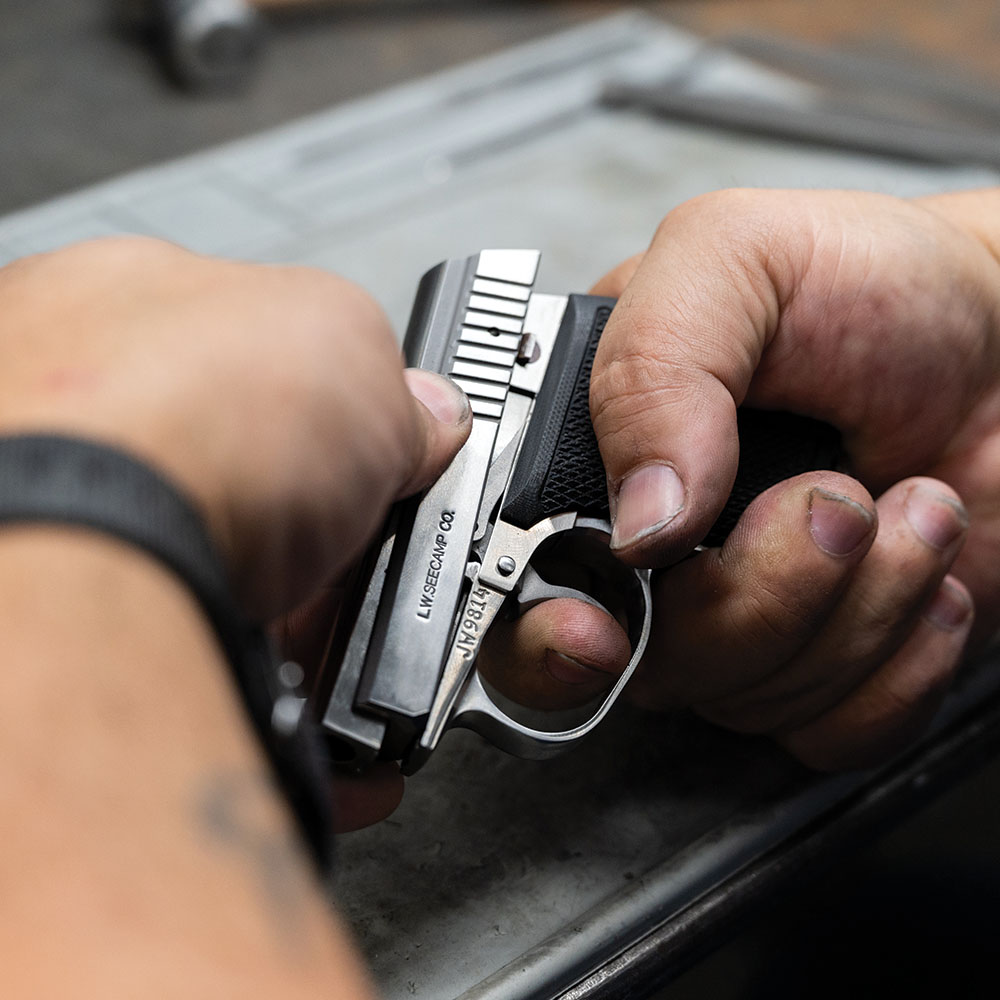
Range Time
While the Seecamp .32 ACP is primarily designed for close-quarters self-defense, it delivers impressive performance within its intended range. The .32 ACP cartridge offers a reasonable balance between recoil and stopping power, making it suitable for individuals seeking a compact handgun with manageable recoil.
Yes, we know there are a lot of people out there who will discount the .32 ACP cartridge as not large enough to use for pure stopping power, but in my humble opinion, I don’t care to get shot with anything, and I’m willing to bet the bad guy doesn’t either. Let’s set any negativism aside and focus on the fact that most of us would rather fight with a gun, than without one.
Whenever I test a handgun, I try my best to not outdo what the firearm was designed to do. The Seecamp was designed for close-quarters protection and honestly speaking, anything outside the bounds of 10-12 yards away is not considered close quarters. I did my testing from this distance only.
For the ammunition, Seecamp states on the box and on their website that they only recommend shooting hollow point ammunition. Their reasoning behind this is because of the small size of the Seecamp handgun, the hollow points have a shorter cartridge length, allowing for smoother and proper feeding. One positive for this is that hollow point ammunition will be more effective in personal defense versus a full metal jacket, especially in a .32 ACP.
At a shooting distance of 10 yards, the Seecamp performed wonderfully. The 11.5-pound trigger pull takes a bit to get used to, but once I got shooting and accustomed to the action, I adjusted comfortably. This type of trigger pull is not uncommon in a double-action style mouse gun with no manual safety. I’ve always considered the heavy trigger pull to act as sort of a safety mechanism.
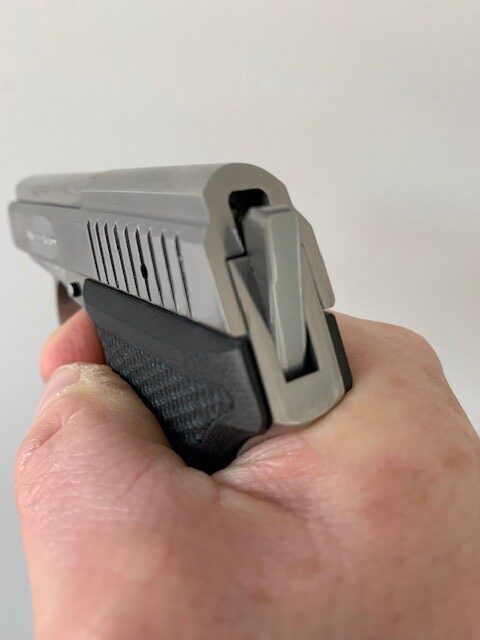
I do recommend the extended pinky magazine. The Seecamp is a tiny handgun, and that little extra pinky grip really helps with control and consistency in the shooting.

The Seecamp Firearms .32 ACP handgun is a testament to the company’s dedication to producing high-quality firearms. With its compact design, stainless steel construction, and reliable performance, this pocket-sized pistol packs a ton features, and is made as well as any firearm on the market today. Seecamp Firearms’ commitment to excellence has earned them a well-deserved reputation in the firearms industry, and their handguns continue to be sought after by discerning customers.

Whether you are a concealed carry permit holder or someone seeking a reliable self-defense option, the Seecamp .32 ACP handgun offers a balance of elegance, reliability, and performance that is hard to beat. From a pricing standpoint, the MSRP exceeds the $600 dollar level, but in today’s world, you do get what you pay for. Quality American-made products are getting harder and harder to find these days, and I applaud Seecamp for doing it all right here in the USA!

